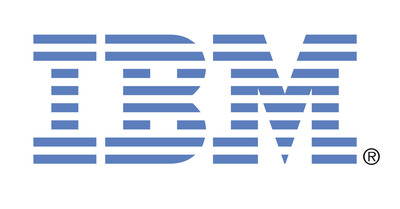Report: IBM Supercomputer is the Most Energy Efficient in the World
ARMONK, N.Y., June 30, 2011 /PRNewswire/ -- An IBM (NYSE: IBM) supercomputer is the most energy efficient supercomputer in the world, according to the latest Supercomputing 'Green500 List' announced by Green500.org. A prototype of IBM's next generation Blue Gene®/Q supercomputer is #1 on the list.
(Logo: http://photos.prnewswire.com/prnh/20090416/IBMLOGO )
The list shows that 6 of the top ten most energy efficient supercomputers in the world are built on IBM high-performance computing technology. The list includes supercomputers from China to Germany and the United States that are being used for a variety of applications such as astronomy, climate prediction and life sciences. IBM also holds over half of the top 100 positions on this list.
Energy efficiency, including performance per watt for the most computationally demanding workloads, has long been a core design principle in developing IBM systems. Energy efficient supercomputers can allow IBM clients to realize critical cost savings by lowering power consumption, reducing expenses associated with cooling and scaling to larger systems while maintaining an acceptable power consumption bill.
For example, for every $1 spent on electricity with the largest petascale system on the Green500 list, clients would spend less than $0.40 cents on a system based on IBM Blue Gene/Q (1) and would be 2.5 times more energy efficient (2).
IBM Blue Gene/Q is scheduled to be deployed in 2012 by two of the U.S. Department of Energy's (DOE) national laboratories, Argonne National Laboratory and Lawrence Livermore National Laboratory, both of which collaborated closely with IBM on the design of Blue Gene, influencing many aspects of the system's software and hardware.
Columbia University and the University of Edinburgh contributed to Blue Gene/Q's processor chip design. Both institutions plan to use the system to advance quantum chromodynamics (QCD), which is a part of the study of particle physics.
IBM offers the broadest range of supercomputers represented on the Green500 List including Blue Gene, Power Systems(TM), System x iDataPlex®, BladeCenter® and hybrid clusters.
IBM supercomputer also topped the Graph500 list, announced last week. Backed by a steering committee of over 30 international HPC experts from academia, industry, and national laboratories, the Graph 500 is a set of large-scale benchmarks for data intensive applications - an important metric as information increases exponentially.
Argonne National Lab's Blue Gene/P supercomputer "Intrepid" is #1 on the list after analyzing the largest graph ever on a parallel machine. Graph algorithms are a core part of many analytics workloads. The Blue Gene/P-based "Jugene" supercomputer at the Juelich Supercomputing Centre is #2 on the Graph500.
More information about the Green500 List is available at http://www.green500.org. More information about the Graph500 is available at http://www.graph500.org/.
More information about IBM and HPC Solutions: www.ibm.com/deepcomputing.
1.) Assuming Blue Gene/Q will achieve equivalent mflops/watt as presented on Green500 list from June 30, 2011 and $/kW is a consistent price estimate for electricity used. Power data derived from www.green500.org. All client examples cited or described are presented as illustrations of the manner in which some clients have used IBM products and the results they may have achieved. Actual environmental costs and performance characteristics will vary depending on individual client configurations and conditions. Contact IBM to see what we can do for you.
2.) Based on the Green500 list issued from Green500.org on June 30, 2011, a prototype of IBM Blue Gene/Q delivered 2,097.192 mflops/watt compared to the #6 system, which delivered 824.5624 mflops/watt.
Contact:
Joanna Brewer
IBM
415-971-2777
jmbrewer@us.ibm.com
SOURCE IBM
